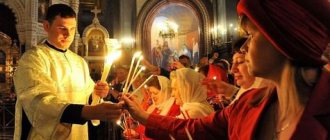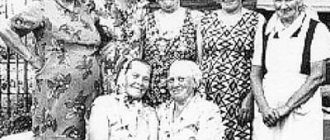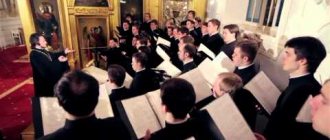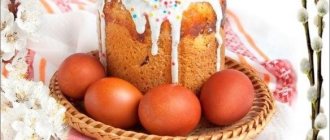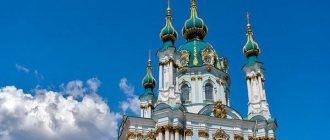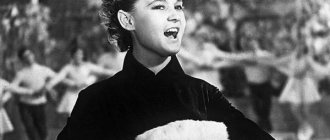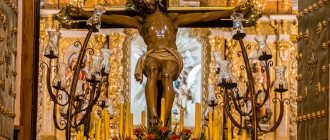Story
According to the four Gospels, the Resurrection of Jesus Christ occurred on the Jewish holiday of Passover. On this day, the Jews celebrated the exodus from Egypt. The Old Testament says that the last “Egyptian execution”, which finally persuaded Pharaoh to decide to release the Jews, was the killing of all the firstborn by an angel. The angel did not touch only those who slain the lamb and smeared its blood on their doors. Thus, the blood of the lamb saved people from death. In the New Testament, Christ played the role of the Lamb who saves people.
Title "Easter"
Gradually, the Hebrew word “Pesach” was transformed into the Russian “Easter”. And people began to use the abbreviated name of the holiday more often instead of the full name.
The first Christians believed that they were living at the end of time and expected the Second Coming every year. In memory of the sacrifice of Jesus, they began to celebrate the liturgy, remembering all the events - from the Last Supper to the Resurrection. Every Friday turned into a day of mourning, and Sunday into a day of joy. This bitterness and joy reached their climax on the day of Jewish Passover. This is how Easter was born in our modern understanding.
What are the differences between Orthodox and Catholic Easter celebrations?
Catholic Easter
The main difference in the celebration of Catholic and Orthodox Easter is the date on which Easter falls.
The Catholic Church lives and celebrates church holidays according to the Gregorian calendar, and the Orthodox Church according to the Julian calendar - this determines that Orthodox and Catholic Easters are celebrated on different dates.
Another difference between Catholics and Orthodox Christians is the tradition of celebrating Easter on different days of the week: Orthodox Christians begin to celebrate Easter exclusively on Sunday, while Catholics begin celebrating Easter on Saturday.
Easter in Rus'
The holiday came to our region along with Christianity. After Saint Prince Vladimir baptized Rus', Easter became the most important state event. Celebrations have since lasted for at least three days. Sometimes Russian princes, after successful campaigns or the birth of an heir, extended the celebration for a whole week.
Resurrection Day preceded Lent, which lasted at least forty days. Our ancestors used this period of time for spiritual cleansing. Pilgrimage to monasteries was very popular. Simple peasants set out on foot many kilometers to arrive at the monastery during Lent. There they confessed and celebrated Easter already cleansed.
Celebrations in modern times
At all times, right up to the end of the first quarter of the 20th century, Easter remained not only the main spring holiday, but also the most central event in the calendar. This was the case until the early twenties, when atheism became government policy. The authorities banned Easter liturgies, contrasting the Resurrection of Christ with its counterpart - Workers' Solidarity Day.
But already in the early nineties of the last century, all prohibitions were lifted and several red days in the spring again appeared on the calendar. As in the old days, Easter occupies a dominant place among all religious events. Even the head of state attends a service on this day in the Cathedral of Christ the Savior in Moscow.
When do Christians celebrate Easter? How is the date of Orthodox Easter calculated?
“Hand of Damascus” - a mnemonic table for calculating the date of Easter
Christian Easter is a moving holiday that does not have a fixed date.
The exact date of Christian Easter is calculated in a rather complex way using church tables, solar and lunar calendars.
Orthodox Easter is celebrated on the first Sunday after the spring full moon, between April 4 (March 22, old style) and May 8 (April 25, old style).
Folk customs and traditions
Since Christians abstain from fast food for a long time before Easter, many Easter traditions are of a culinary nature.
Kulich or Paska
The main dish of the holiday is butter cake, which is now commonly called “paska”. Easter cakes are baked in advance and illuminated in the church the day before the holiday. Our ancestors called paska a completely different dish - cheese baba. To prepare it, we used a lot of chicken eggs and selected cottage cheese. Easter cakes were baked separately. The paska had the shape of a pyramid, which symbolized Mount Golgotha, where Jesus Christ was buried. Eating Easter symbolized Christ's victory over death.
It is customary to carry Easter cakes to church in wicker baskets, made of wicker or other material. In some parishes, paskas are blessed in the evening before Easter, in others - already on Sunday.
A separate tradition is decorating baskets. Now many Western attributes have come to us, previously unusual for the Orthodox tradition. Such symbols include rabbits, yellow flowers and heart-shaped confectionery.
Painted eggs
Along with the Easter cakes, it is customary to put eggs in the basket, painted bright red or covered with an intricate pattern. They are also intended to symbolize the victory of life over death. There is a version that this tradition is dictated by the shape of the egg - there is life under the dead shell.
After the Easter meal begins, the children take the eggs in their hands and try to break their friend's egg. This game was called “Christification”, since when the egg was hit, the Easter greeting was usually pronounced: “Christ is Risen.”
Why was the Last Supper called “mystery”?
Zion Upper Room
She was a “mystery” for the enemies of Christ. The fact is that Judas even then - before the Passover meal - entered into an agreement with the high priests, as they were looking for an opportune moment to seize Christ. The student did not know where exactly the festive evening would be, but he knew for certain that the Teacher would then go to the Garden of Gethsemane, where, under the cover of darkness, without unnecessary witnesses, it would be possible to arrest Him, avoiding popular indignation. That's why Judas left the supper early to lead the soldiers to the right place.
Church service - Easter Liturgy
Worship in Orthodox churches begins in the evening of the previous day and continues throughout the night. Although most believers come only in the morning to get to the main part of the action - the Holy Liturgy. In ancient times, it was customary to baptize catechumens on this day. Then, in order to become a Christian, you had to prove your piety over a long period. Such candidates were called catechumens and were not allowed to be present in the church during the celebration of the sacraments.
During Lent, priests wear either passion vestments in red or mourning vestments in purple. In such clothes they begin the Easter service. But as soon as the joyful “Christ is Risen” sounds, they dress in the most beautiful outfits, made of white fabric with an abundance of gold.
Why do you need to eat the Flesh and Blood of Christ? Is faith alone not enough?
The fact is that the Lord calls the whole person to salvation - both his body and his soul. Since Christ is God and Man at the same time, a Christian who eats His Blood and Flesh becomes a partaker of the Divine by grace. The most important call of Christianity is that both the body and soul of a person must be saved and deified. Therefore, Communion brings complete healing to both the physical and spiritual life of a person. A Christian must not only profess faith, but also perform some sacred actions, as St. Augustine writes: “When the water of baptism touches our body, it cleanses our soul.” I repeat once again: a person must be saved not just at the level of some abstractions - like some kind of spiritual being, but only holistically - both body and soul.
Any sacrament is connected to some substance. For example, the sacrament of Baptism is with water, the sacrament of Confirmation is with oil. The substance of Confession is the sins of a person that he actually committed (thoughts, words or deeds) and for which he repents. The substance of the Eucharist is bread and wine, which are transformed into the true Body and true Blood of the Savior.
Thus, the fact that the sacrament includes some substance sanctified by God makes it not something abstract, but, on the contrary, concrete, and this concreteness is very important. Both spiritual and physical transformation of a person occurs.
Easter festivities
Immediately after the end of the festive liturgy, festivities begin. On this day, it is customary to wear your best clothes and not restrain yourself in showing joy. Young guys explode crackers and set off fireworks, large fairs open where not only goods are sold, but also various competitions are held. For example, a pillar is placed in the main square, with a valuable object tied to the top. To win the competition, you need to reach the top of the pillar and remove this item, receiving it as a prize.
From time immemorial, artisans have used folk festivals to show off their best products. For example, on this day bakers baked a gigantic Easter cake right on the square and divided it among everyone.
The Sunday of Christ was also considered an excellent occasion for charity. On this day, the imperial couple could visit a shelter for orphans or the poor. Poor people were received in the houses of rich people or food was taken out to them on the street.
In the evening, towards the end of the festivities, it is customary to light the Easter fire. A fairly large fire was laid out in the main square of the village and lit at nightfall. Now, for obvious reasons, this tradition has been forgotten. Although in some villages bonfires are lit, not in the main square, but near the church.
First Ecumenical Council
The disciples first lived in Jerusalem, in Palestine. This land was then part of the Roman Empire, in which paganism prevailed, as in neighboring territories (for example, in Persia, among barbarian tribes). In the first centuries, Christians were subjected to severe persecution by government authorities and pagans. The Jews also persecuted them.
Gradually the number of believers increased. In the 4th century, the holy Equal-to-the-Apostles King Constantine allowed the free practice of Christianity. Now it has become the state religion.
In this century, heresies began to appear. One of them was the false teaching of Arius. To examine and condemn him, the first Ecumenical Council was held in 325. It took place in the city of Nicaea. At it, 318 holy fathers refuted and condemned the Arian heresy. One of the issues discussed was determining the time of Easter celebration. It was established that it should be celebrated on the first Sunday after the vernal equinox and not on the same day as the Jewish one.

